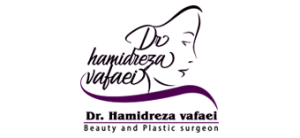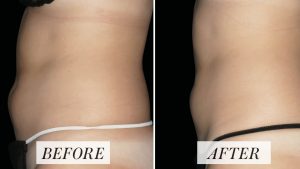Body contouring
Body contouring is the use of a device, from surgical to non-surgical and invasive to non-invasive, to reduce unwanted fat in stubborn areas and contour and shape the body. Body contouring is gaining in popularity. Most body contouring procedures are meant for reducing the fat in smaller, more difficult areas and most devices are limited to the amount of area they can treat.
Types of Body Contouring
Liposuction
Liposuction is the most popular cosmetic procedure performed in the United States. In fact, the number of liposuction patients has increased by 264 percent since 1992. An ideal candidate for liposuction has a stable weight and localized fatty deposits that will not disappear with diet and exercise. While liposuction typically requires general anesthesia, it can be performed as an outpatient surgery.
The following liposuction procedures may be used alone or in combination:
- Laser liposuction
- Power-assisted liposuction
- Tumescent liposuction
- Ultrasonic-assisted liposuction
Who Is A Good Candidate Body Contouring?
When it comes to body contouring, there are a wide variety of options out there. However, in recent years non-invasive body contouring options have become extremely popular, and for good reason! After all, going under the knife for body contouring can lead to long recovery times and may not give you the results you’re looking for. But thanks to technological advancements there are plenty of non-surgical body contouring options. Lipo Laser, Electrotherapy, and Torc Body Contouring, just to name a few.
Who Isn’t a Good Candidate?
While body contouring is a great option for pretty much everyone, there are some things that wouldn’t make you a good candidate for this non-invasive treatment. Since body sculpting methods like Lipo Laser damage fat cells under the skin with a laser, patients who have scars, infections or open sores in the problem areas might not be great candidates. Additionally, people who are looking for drastic weight loss results aren’t the best candidates either. That’s because body sculpting is used for fat loss, not weight loss. While somebody contouring methods like Body Lyft’s MuscleMax may help you strengthen and tone your muscles, these treatments are generally not used for dramatic weight loss.
How should I prepare for body contouring?
In preparing for body contouring surgery, you may be asked to:
- Get cleared for surgery by your bariatric surgeon and/or primary care doctor
- Get a lab test
- Take certain medications or adjust your current medications
- Stop smoking well in advance of surgery
- Avoid taking aspirin, anti-inflammatory drugs, and herbal supplements or other medications that may increase bleeding
Body contouring surgery should be performed in an accredited office-based surgical facility, a licensed ambulatory surgical center or a hospital. If your body contouring is performed on an outpatient basis, be sure to arrange for someone to drive you to and from surgery and to stay with you for at least the first night following surgery.
Body Contouring procedure
The procedures necessary to achieve your goals will be defined along with a plan for the timing of these procedures.
Anesthesia
Medications are administered for your comfort during the surgical procedures. The choices include intravenous sedation and general anesthesia. Your doctor will recommend the best choice for you.
The incision
All body contouring procedures require large incisions to remove excess skin. In many cases, these incisions may be extensive. Incision length and pattern depend on the amount and location of excess skin to be removed, as well as personal preference and your doctor’s surgical judgment. Advanced techniques usually allow incisions to be placed in strategic locations where they can be hidden by most types of clothing, but this is not always the case. Body contouring is often performed in stages. Your particular condition and goals, as well as your plastic surgeon’s best judgment, will all influence how your doctor defines a surgical plan. While it may have taken you two years or more to lose all the excess weight, it may take equally as long for the results of your body contouring to be complete.
What should I expect during a consultation for body contouring?
During your body contouring consultation be prepared to discuss:
- Your surgical goals
- Medical conditions, drug allergies and previous medical treatments
- Current medications, vitamins, herbal supplements, alcohol, tobacco and drug use
- Previous surgeries
Your plastic surgeon will:
- Evaluate your general health and any preexisting health conditions or risk factors
- Examine your body and take detailed measurements
- Take photographs for your medical record
- Discuss your options and recommend a course of treatment
- Discuss likely outcomes of body contouring and any risks or potential complications
The success and safety of your procedure depend on your complete candidness during your consultation. Be sure to ask questions. To help, we have prepared a checklist of questions to ask your body contouring surgeon that you can take with you to your consultation.
It’s very important to understand all aspects of your body contouring procedure. It’s natural to feel some anxiety, whether it’s excitement for your anticipated new look or a bit of preoperative stress. Don’t be shy about discussing any concerns with your plastic surgeon.
What are the risks of body contouring?
The decision to have plastic surgery is extremely personal, and you will have to decide if the benefits will achieve your goals and if the risks and potential complications of body contouring surgery are acceptable.
You will be asked to sign consent forms to ensure that you fully understand the procedure and any risks and potential complications. Body contouring risks include:
- Bleeding
- Infection
- Fluid accumulation
- Poor wound healing
- Skin loss
- Blood clots, deep vein thrombosis (DVT) and pulmonary embolism
- Excessive or widened scars
- Numbness or other changes in skin sensation
- Anesthesia risks
- Unfavorable scarring
- Residual skin laxity or contour irregularity
These risks and others will be fully discussed prior to your consent. It is important that you address all your questions directly with your plastic surgeon.
Recovery after Body Contouring
General anesthesia and at least one overnight stay are often required for body contouring procedures. The primary risks of surgery include wound healing difficulties, asymmetry, and persistent contour deformities. After surgery, you may need to use surgical drains to remove excess fluid or blood that may collect at the surgical site. Your doctor will explain how to use and care for your drain. Your doctor may also require that you wear a compression garment for six to eight weeks. Initial discomfort may last up to four weeks while a full recovery may take several months. The extent of your scars will vary depending on your procedure. For example, body contouring surgery will result in greater scars than liposuction. Results for body contouring procedures vary according to the individual. Revision surgery may be necessary to address complications or achieve desired results.








Leave a Reply
Want to join the discussion?Feel free to contribute!